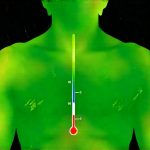The sensation of cold nausea – that unsettling combination of stomach distress and shivering chills – is something many people experience at least once in their lives. It’s rarely pleasant, often disruptive, and can leave you wondering what exactly is going on within your body. While frequently linked to common illnesses like the flu or a bad cold, the causes behind these episodes are surprisingly diverse, ranging from relatively harmless triggers to more complex underlying issues. Understanding the potential reasons for this unpleasant pairing – nausea and shivering – and recognizing when professional medical attention might be necessary is crucial for managing your well-being. This article will delve into the intricacies of cold nausea and shivering spells, offering insight into their causes, associated symptoms, and helpful strategies for coping with them.
It’s important to distinguish between a simple feeling of being chilly and genuine shivering, which is the body’s involuntary response to rapidly losing heat. Similarly, nausea isn’t always indicative of illness; it can stem from psychological factors like anxiety or even motion sickness. When these two sensations occur simultaneously, however, it suggests a more significant physiological process at play. The body is essentially signaling distress – either in reaction to an external factor (like cold exposure) or as a consequence of internal changes (such as infection). This article aims to unpack the nuances of this combined experience, providing information that empowers you to better understand your body and seek appropriate care when needed.
Understanding the Body’s Response
The simultaneous occurrence of nausea and shivering isn’t random; it represents the body’s attempt to regain homeostasis – a state of internal balance. Shivering is the most obvious sign. It’s triggered by the hypothalamus, the brain region responsible for temperature regulation. When body temperature drops, the hypothalamus initiates rapid muscle contractions (shivering) to generate heat. This process requires energy, and when the body is already stressed or compromised, it can disrupt digestive processes leading to nausea. Think of it as a system prioritizing survival – conserving energy for vital functions like maintaining core temperature potentially at the expense of efficient digestion.
Nausea itself is a complex response orchestrated by the nervous system and influenced by various factors. It’s not simply “feeling sick to your stomach” but involves communication between the vagus nerve, chemoreceptor trigger zone in the brain, and areas controlling vomiting centers. When the body experiences temperature fluctuations or detects potential toxins (like those released during an infection), these signals can converge, triggering nausea. The connection becomes even stronger if dehydration accompanies the cold sensation; reduced fluid levels exacerbate both shivering and feelings of sickness.
Furthermore, the interplay between the immune system and the nervous system plays a significant role. When fighting off an infection, the body releases cytokines – signaling molecules that mediate inflammation. These cytokines can affect brain function, contributing to symptoms like fatigue, loss of appetite, and nausea. The combination of shivering (attempting to raise temperature) and nausea (a sign of immune response or digestive upset) often points towards a systemic issue, rather than a localized one. Understanding this interconnectedness helps explain why these symptoms frequently appear together. If you experience chronic nausea alongside other issues, it may be time to investigate potential connections with autoimmune disorders.
Possible Causes: From Infections to Dehydration
One of the most common culprits behind cold nausea and shivering spells is viral infection, such as the flu (influenza), common cold, or norovirus (“stomach flu”). These infections often present with fever, muscle aches, fatigue, and gastrointestinal symptoms like nausea, vomiting, and diarrhea. The body’s immune response – involving cytokine release – contributes to both shivering from fever and nausea due to digestive disruption. In these cases, rest, hydration, and supportive care are usually sufficient for recovery. However, it’s important to distinguish between a mild viral infection that can be managed at home and a more severe case requiring medical attention.
Beyond infections, dehydration is another frequent contributor. When dehydrated, the body struggles to regulate temperature effectively, leading to shivering even in relatively warm environments. Dehydration also impacts digestive function, increasing the likelihood of nausea. This can happen during or after intense exercise, prolonged exposure to heat (even if you’re not aware of overheating), or insufficient fluid intake. Restoring adequate hydration is often key to alleviating these symptoms. Consider drinking small, frequent sips of water or electrolyte solutions rather than large amounts at once, which can further irritate the stomach. You might also want to consider whether gastritis without bleeding is playing a role in your digestive discomfort.
Finally, hypoglycemia (low blood sugar) can also manifest as cold nausea and shivering. When blood sugar levels drop too low, the body triggers a stress response that includes shivering to generate energy. Simultaneously, hypoglycemia can disrupt digestive processes, leading to nausea. This is especially common in individuals with diabetes who are taking insulin or other medications that lower blood glucose. If you have diabetes and experience these symptoms, it’s crucial to check your blood sugar levels immediately. If you also notice dizziness when lying down, consult with a doctor.
When to Seek Medical Attention
While many instances of cold nausea and shivering can be managed at home, certain warning signs indicate the need for medical evaluation. Persistent or severe vomiting – especially if accompanied by inability to keep down fluids – can lead to dangerous dehydration. Similarly, a high fever (over 103°F or 39.4°C) warrants prompt attention, as it could signify a more serious infection. Look out for signs of sepsis—a life-threatening condition caused by the body’s overwhelming response to an infection—including confusion, rapid heart rate, and difficulty breathing.
If the nausea and shivering are accompanied by other concerning symptoms like severe abdominal pain, chest pain, shortness of breath, dizziness, or weakness, it’s vital to seek immediate medical care. These could indicate a more serious underlying condition unrelated to a simple illness. Additionally, if the symptoms persist for several days despite home remedies, or if you have any pre-existing health conditions that might be contributing factors (such as diabetes, heart disease, or kidney problems), it’s best to consult with a healthcare professional. Many people also experience itchy throat alongside these symptoms.
Finally, trust your instincts. If something feels “off” or significantly different from previous experiences of illness, don’t hesitate to seek medical advice. It’s always better to err on the side of caution when it comes to your health. Remember that this information is not intended to be a substitute for professional medical advice, diagnosis, or treatment. Always consult with a qualified healthcare provider if you have any questions about your health or are experiencing concerning symptoms. Additionally, consider how acid reflux affects sleep quality as it can exacerbate these issues.
The human body is remarkably resilient, but also vulnerable. Recognizing the subtle signals it sends – like cold nausea and shivering spells – can empower you to proactively manage your well-being and seek appropriate care when needed. By understanding the underlying mechanisms behind these experiences, you can navigate them with greater confidence and ensure a swift return to health. If you suspect egg intolerance in children or soy intolerance reactions, seek guidance from a healthcare provider.


















